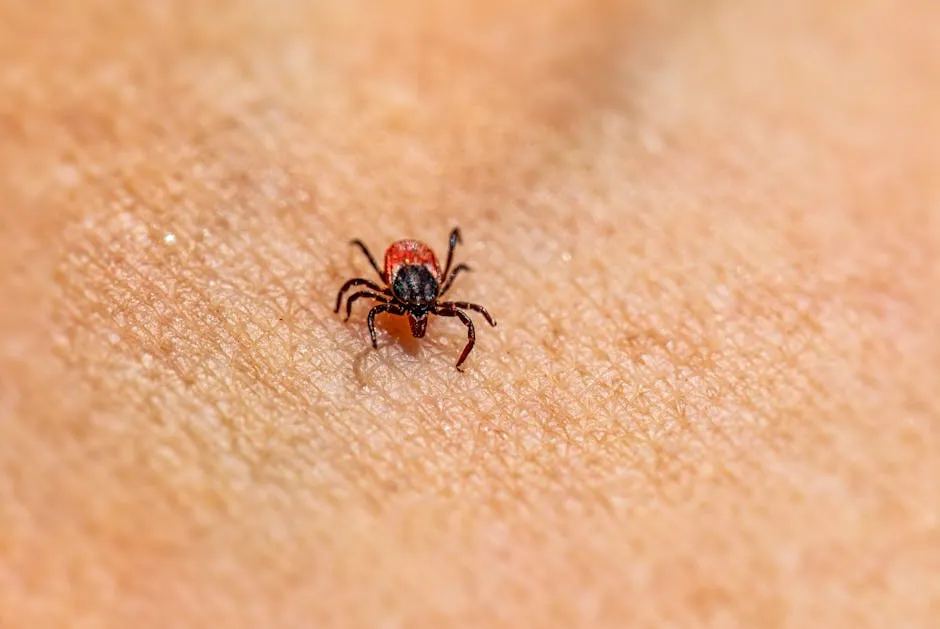Introduction
Understanding dog ticks is crucial for your pet’s health. These tiny parasites can lead to serious diseases if left unchecked. Ticks are on the rise, and their associated illnesses are becoming more common. As a pet owner, being informed about ticks can help you protect your furry friend from harm. To make sure your pup is protected, consider using Frontline Plus Flea and Tick Prevention for Dogs. It’s a reliable choice that helps keep those pesky parasites at bay while ensuring your furry friend can frolic in the great outdoors without a worry!Summary and Overview
In this blog, we will cover essential information about dog ticks. We will discuss various types of dog ticks, including the American Dog Tick and Lone Star Tick. You’ll learn about their life cycle and the diseases they can transmit, such as Lyme disease and Rocky Mountain Spotted Fever. Additionally, we will provide effective prevention methods and safe removal techniques. Regular checks and veterinary consultations are vital in keeping your pet healthy. By the end, you’ll have the knowledge needed to protect your dog from these pesky parasites.
To learn more about Lyme disease and how it affects dogs, check out this informative article on lyme disease in dogs.
Types of Dog Ticks
Several dog tick species are prevalent across North America, and knowing them helps in identification and prevention.Common Species of Ticks
1. American Dog Tick This tick is commonly found in grassy fields and wooded areas. It has a distinctive brown color with white spots. Adult females can grow to about ½ inch long when engorged. They are most active from spring through early summer and are known to transmit diseases like Rocky Mountain Spotted Fever. 2. Lone Star Tick Recognizable by the single white spot on its back, this tick prefers wooded areas. It feeds on a variety of hosts, including dogs and deer. Lone Star Ticks are most active from March to July and can transmit diseases like Ehrlichiosis and Tularemia. 3. Brown Dog Tick Unique for its ability to infest indoor spaces, this tick poses a risk year-round. It primarily feeds on dogs and can transmit diseases like Ehrlichiosis. Brown Dog Ticks are often found in residential areas. These ticks thrive in specific habitats such as forests, grasslands, and even urban backyards. They typically become more active in warmer months, making regular checks essential for pet safety. In North America, there are roughly 15 common tick species. Regularly checking your pets for ticks can help catch infestations early, ensuring your dog stays healthy and happy. If you’re concerned about ticks, you might want to check out a Tick Removal Tool Kit to ensure you’re prepared for any unwelcome guests!
Life Cycle of Dog Ticks
Understanding the life cycle of dog ticks is key to preventing infestations. Ticks have four distinct stages: egg, larva, nymph, and adult. Each stage has specific characteristics and preferences.Stages of Development
1. Egg Stage: A female tick can lay thousands of eggs in her lifetime. These eggs are typically found in leaf litter or grassy areas. This stage lasts around two weeks, depending on environmental conditions. 2. Larva Stage: Once the eggs hatch, six-legged larvae emerge. Larvae are tiny and require a blood meal from a host to grow. They prefer small mammals, such as mice or voles. This stage lasts about 3-7 days. 3. Nymph Stage: After feeding, larvae molt into nymphs. Nymphs are eight-legged and hunt for larger hosts, often dogs or humans. They are most active in late spring and summer. This stage can last 2-3 weeks, and they require another blood meal. 4. Adult Stage: Finally, nymphs mature into adults. Adult ticks can live for several months to over two years, depending on conditions. They prefer medium to large hosts, including dogs, deer, and even humans. Adult ticks are most active in spring and fall. Ticks can complete their entire life cycle in as little as two months, but many take longer. This adaptability allows them to survive in various environments. Regular monitoring of your pets for ticks is essential, especially during peak seasons. Being aware of the tick life cycle can help you better protect your furry friends from these parasites.
Prevention of Dog Ticks
Preventing dog ticks is essential for your pet’s health. Ticks can transmit serious diseases like Lyme disease and Rocky Mountain spotted fever. Fortunately, there are effective strategies to keep ticks at bay.Effective Prevention Strategies
Using preventive treatments is one of the best ways to protect your dog. Topical treatments, like spot-on applications, are popular choices. These products are applied to your dog’s skin and can repel or kill ticks. Tick collars also provide a long-lasting solution. They release chemicals that deter ticks from attaching. Additionally, oral medications, such as chewable tablets, can be very effective. These medications work systemically to kill ticks when they bite your dog. Consider products like Advantix II Flea and Tick Prevention for Dogs for a solid defense against these tiny terrors! While treatments are crucial, reducing tick exposure is equally important. When walking your dog, avoid tall grass and heavily wooded areas. Stick to well-maintained paths. At home, consider your yard’s environment. Ticks thrive in shaded, humid areas. Regularly mow your lawn and clear away leaf litter. Create a barrier of gravel or wood chips between your yard and wooded areas to deter ticks.
Recommended Tick Prevention Products
Talk to your veterinarian about the best tick prevention products for your dog. Popular options include Frontline Plus, Advantix, Nexgard, and Simparica. Each product has unique benefits, so it’s important to choose one that suits your dog’s needs. If you prefer a natural approach, consider trying a Natural Tick Repellent for Dogs to keep those critters away with a gentle touch.Yard Maintenance Tips
Proper yard maintenance can significantly reduce tick populations. Keep your grass cut short and remove any debris. Trim back shrubs and bushes to allow sunlight to enter. This helps dry out areas where ticks may hide. You can also consider using natural tick repellents, like cedar mulch, which can deter these pests.
Relevant Statistics/Data
Studies show that topical treatments can reduce tick bites by over 90%. In addition, regular inspections of your dog can catch infestations early, making preventive measures even more effective. Regular checks and preventive treatments are vital in the fight against ticks. To ensure you’re using the best methods, schedule a veterinary appointment. Your vet can provide personalized advice for keeping your dog tick-free. Don’t forget to have a Dog First Aid Kit handy for emergencies!
Monitoring Your Dog for Tick-Related Symptoms
Keeping an eye on your dog is crucial, especially after outdoor adventures. Ticks can transmit serious diseases, so recognizing symptoms early is vital.Signs to Watch For
Look for behavioral changes in your dog. Is your playful pup suddenly lethargic? Loss of appetite is another red flag. Physical signs to monitor include fever, swollen joints, or unusual lameness. These symptoms may indicate tick-borne illnesses, such as Lyme disease or Rocky Mountain Spotted Fever. Symptoms typically appear within 7 to 21 days after a tick bite. If you’ve recently found a tick on your dog, stay alert for these signs. Regular check-ups with your veterinarian are essential, particularly after known tick exposure. Your vet can help identify potential health issues and suggest preventive care.

Conclusion
In summary, understanding the dangers of dog ticks is crucial for every pet owner. Regularly checking your dog for ticks and being aware of symptoms can prevent serious health issues. Always consult your veterinarian for the best practices in tick management and treatment. Stay vigilant and keep your furry friend safe!FAQs
What are the most common types of dog ticks?
The American Dog Tick, Lone Star Tick, and Brown Dog Tick are the most common. The American Dog Tick has a brown body with white spots, often found in grassy areas. The Lone Star Tick features a distinctive white spot on its back and prefers wooded regions. The Brown Dog Tick can infest homes and is known for its resilience indoors.
How can I tell if my dog has a tick?
Run your hands over your dog’s body after walks. Focus on areas like the ears, neck, and between toes. Ticks often feel like small bumps on the skin. Look for signs like scratching or biting at the skin, which may indicate a tick.
What should I do if I find a tick on my dog?
Use fine-tipped tweezers to grasp the tick close to your dog’s skin. Pull straight out with steady pressure without twisting. Clean the bite area afterward, and wash your hands. If unsure, consult your vet for advice.
What diseases can ticks transmit to dogs?
Ticks can transmit serious diseases, including Lyme disease, Rocky Mountain Spotted Fever, and Ehrlichiosis. Symptoms can vary but may include fever, lameness, loss of appetite, and swollen joints. If you notice these signs, contact your veterinarian.
How can I prevent ticks on my dog?
Use tick prevention products like topical treatments, collars, or oral medications. Regularly check your dog for ticks, especially after outdoor activities. Keep your yard tidy by mowing grass and removing debris to reduce tick habitats. Consult your vet for the best options tailored for your dog.
All images from Pexels




